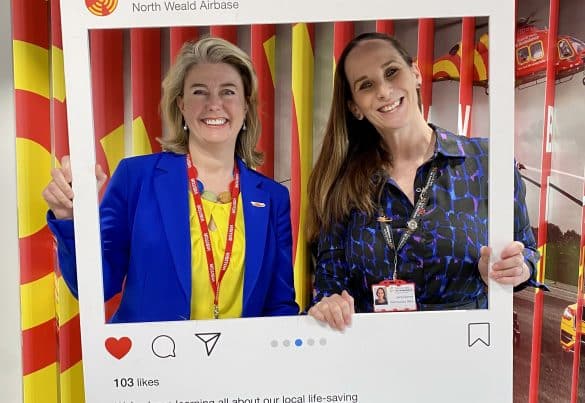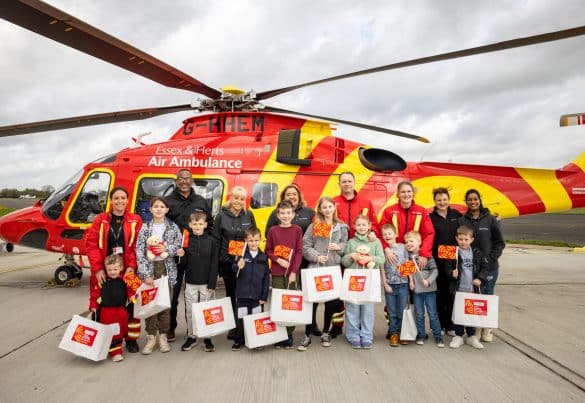SHARE
This month we caught up with one of our Chief Pilots, David Kerr-Sheppard.
What is your role at EHAAT and how long have you been here?
I have been with EHAAT for ten years and I am now the Chief Pilot of our airbase at Earls Colne. When I started I oversaw the introduction of the Herts aircraft at North Weald. Initially we only flew Monday to Friday but this soon expanded to seven days a week. As Chief Pilot I supervise the other pilots and liaise with the Operations Director ensuring that all the stringent rules and regulations are complied with.
Tell me about your career to date…
I came to EHAAT after 31 years service in the RAF. Most of my flying was on the Sea King Search and Rescue Helicopter based in Northumberland and then as an instructor in Cornwall. My last flight in the Sea King was as one of the RAF’s two squadron commanders looking after the southern half of the UK’s search and rescue capability. Some of my more notable rescues during my RAF flying career were the Zeebrugge ferry disaster, the Piper Alpha oil rig explosion and the Pan Am Boeing 747 terrorist attack over Lockerbie.
I left the RAF as a Wing Commander spending my last 4 years working in the Ministry of Defence. The higher you get in the RAF the less likely you are to fly and my passion was always to be in the air. Luckily a position came up in EHAAT at just the right time and here I am today! I still get excited when the call for a job comes through as you have no idea what it is going to be or where we are going.
What inspired you to become a Pilot?
I always wanted to be a Pilot from my earliest memories and everything I did at school and as an air cadet was focused to that end. I joined the RAF at 17 and after a short period flying in Nimrod surveillance aircraft I started pilot training on the Jet Provost before volunteering to undertake helicopter training in the Gazelle and Wessex. Like many professions, becoming a Pilot is either very costly or very difficult to get into. I was lucky that the RAF taught me to fly.
My first solo in a glider was at 16 and my first solo in a light aircraft was at 17 – I didn’t get my driving licence until I was 18.”
Can you fly any helicopter? Or are they all different?
Each helicopter is slightly different and you must complete a ‘type rating’ for each type of aircraft you want to fly. I have a type rating for the MD902 Explorer. I’m up to just over 5,000 flying hours now with almost 1,500 hours in the MD902.
What challenges do you face in work?
Finding a place to land is often the hardest part of the job; there is always somewhere to land but getting the best place, close to the incident, can be difficult. The strangest place I’ve landed is on the Queen Elizabeth II bridge on the M25 for an RTC. The view when landing at the Royal London Hospital is always pretty cool at it sits high above the surrounding buildings and you get an excellent view of the London skyline. When flying back to base from Kings College or St George’s hospitals you fly past all the major London landmarks. We see a lot of the public when we are out on a mission and the question I get asked the most when out on a call is ‘Are you medically trained or are you just the Pilot?’ The truthful answer is – No, I’m just the Pilot!

Join our mailing list
Join the community and recieve all the latest news and updates straight to your inbox.






